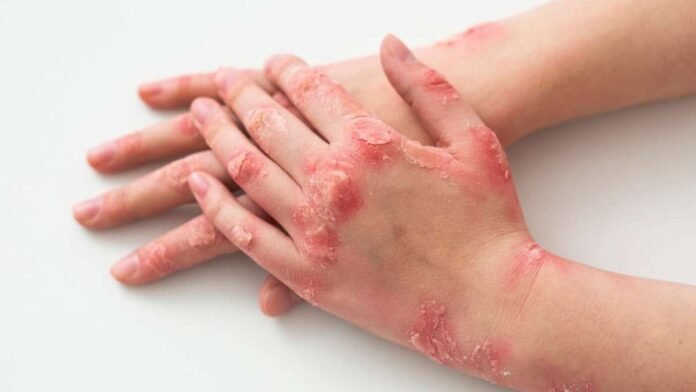Diabetes affects several parts of the body including the skin. Learn about some severe skin problems that can be caused by Diabetes…
Diabetes affects your skin as well as your heart, kidneys, liver, eyes, nerves, and feet. Diabetics must monitor their blood glucose levels and skin and nail changes.
Diabetes results from uncontrolled blood sugar. Do you know? Diabetes can cause and worsen skin conditions. Diabetes high blood glucose affects blood circulation and deprives blood vessels and neurons of blood and nutrients. Thus, white blood cells fight infections less effectively. Reduced blood flow hinders skin repair and collagen, reducing resilience. Dr. Shareefa Chause, Dermatologist, Apollo Spectra, Mumbai, says this damage impairs skin cell activity, increasing skin temperature and pressure sensitivity.
The following skin issues are frequent with diabetes:
- Anyone can have psoriasis, but type 2 diabetics are more likely to have it worsen. This condition causes a red, itchy area with white scales.
- Dry, itchy skin: High blood sugar causes the body to remove fluid from skin cells to make urine, causing dry, cracked skin. Dry skin can also result from diabetic neuropathy, especially in the legs and feet. Itching dry skin can cause cracks that let infections in, producing inflammation, redness, and irritation.
- Diabetics are more susceptible to fungal infections, which cause red, itchy rash and scales in warm body locations like between toes, elbow creases, armpits, and mouth corners. Diabetics often get candida albicans, ringworms, athlete’s foot, jock itch, and recurring vaginal yeast infections.
- Diabetics get bacterial infections. Diabetics get boils, folliculitis, eyelid styes, carbuncles, and nail infections.
- Necrobiosis Lipoidica starts as little solid skin bumps that become large, hard, yellow or reddish-brown patches if untreated. Shiny lumps, itching skin, and visible blood vessels are further symptoms.
- Acanthosis nigricans, which typically precedes diabetes, causes dark, thick, velvety skin on the armpits, groin, and neck. Elbows, hands, and knees might also be affected.
- While digital sclerosis is not due to excessive gadget use, its symptoms may limit it. Hardened thickening skin on hands causes tight waxy skin and stiff fingers, making finger mobility difficult. The disorder can affect toes, upper arms, knees, ankles, and elbows.
- Diabetic bullae are blistering eruptions on the backs of fingers, hands, toes, feet, legs, or forearms. Burn blister-like lesions are more common in diabetic neuropathy patients. Painless blisters heal on their own in weeks.
How do diabetics care for skin?
Clean and dry skin is essential for diabetics, especially between the toes, under the breasts, underarms, and groin. Regular body checks for anomalies are recommended. Avoid hot showers and moisturize. Wounds need immediate attention. Drinking enough water and not popping blisters or shaving skin tags are crucial. Daily sunscreen application as directed by a specialist is necessary.
Conclusion
The skin, heart, kidneys, liver, eyes, nerves, and feet are all affected by diabetes. Failure to regulate blood sugar increases the risk of and worsens skin conditions. Elevated blood glucose reduces blood flow and nutrients to blood arteries and neurons, making white blood cells less effective at fighting infections. Reduced blood flow impairs skin repair and collagen, weakening it. Psoriasis, dry and itchy skin, diabetic neuropathy, bacterial infections, Necrobiosis Lipoidica, Acanthosis nigricans, digital sclerosis, and diabetic bullosis diabeticorum are common diabetes skin disorders.
Diabetics are more prone to fungal, bacterial, Necrobiosis Lipoidica, Acanthosis nigricans, digital sclerosis, and diabetic bullosis diabeticorum infections. Diabetics must clean and dry their skin, have frequent examinations, avoid hot showers, moisturize, and treat wounds. Drinking enough water, not popping blisters, and using sunscreen everyday are also important.



